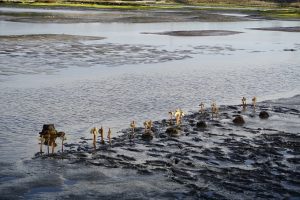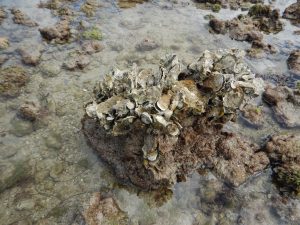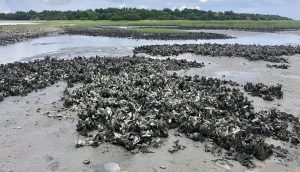Management activities to rebuild the Chesapeake Bay eastern oyster population have achieved limited success. One reason is that the magnitude of oyster spatfall (settling and attachment of larvae to substrate) varies spatially and between years. This variability is driven both by water quality conditions affecting larval production and also by variation in quantity and condition of substrate (shell) for larval settlement. Restoration efforts can include renovating oyster bars by uncovering buried shell and placing fossil shell on bars. Researchers in this project have developed a model that can predict which locations have the greatest likelihood of receiving above-average spatfall under prevailing weather conditions. The model could allow natural-resource managers to better focus these restoration efforts. The findings provided supporting evidence for a decision by the U.S. Army Corps of Engineers to locate a major, multi-year oyster restoration project in Harris Creek, a tributary of the Choptank River in Maryland. This project will serve as an important test case of oyster restoration methods in the Chesapeake Bay generally.



